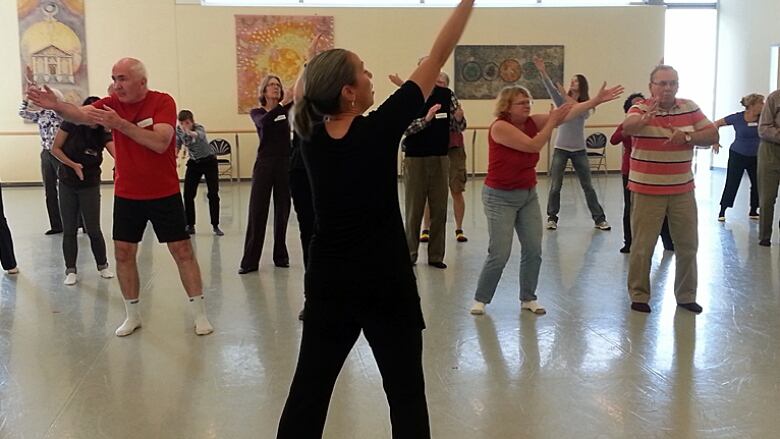How do dance lessons retrain brain in Parkinson's patients?
Brain may develop new paths around damaged areas when stimulated by dance

People with Parkinson's disease are dancing at the National Ballet School as part of a study into how learning dance moves can change the brain.
Anecdotally, learning to dance seems to improve motor skills in the short-term among people with Parkinson's disease, a neurological disorder that interferes with gait and balance.
As part of a 12-week program, 20 people with Parkinson's disease are taking weekly dance classes at the National Ballet School in Toronto. The classes began in September.
The research team is led by neuroscientist Prof. Joseph DeSouza of York University's Faculty of Health and National Ballet School instructor Rachel Bar.
The volunteers are also getting a series of functional MRI scans to help researchers understand how the brain reacts and learns.
"We know that balance can improve and gait can improve and even there's social benefits but we want to see why that's happening, how is it happening? To do that, we're looking inside the brain," Bar said.
People aren't able to dance in scanner but they are asked to visualize the dance while listening to the accompanying music.
"If you visualize a dance, theoretically you're using almost all the same neural circuitry as if you were doing it," DeDouza said.
The hypothesis is that the brain of someone with Parkinson's may develop new paths around damaged areas if stimulated by the movement of dance.
So far, data from professional ballet dancers and others without Parkinson's disease show changes in brain activity in the brain's primary auditory cortex and supplementary motor cortex when visualizing a dance while listening to music.
Hugh Crosthwait, 67, of Toronto is one of the volunteers in the study. Crosthwait first noticed signs of Parkinson's disease in January. He now has problems negotiating stairs and walks differently.
"When you're doing the dance, some of those thoughts, some of that care about watching every step you take goes away."
The study is funded by the Irpinia Club, an Italian social club, and the Parkinson Society Canada.
With files from CBC's Kas Roussy












_(720p).jpg)


 OFFICIAL HD MUSIC VIDEO.jpg)
.jpg)



























































































